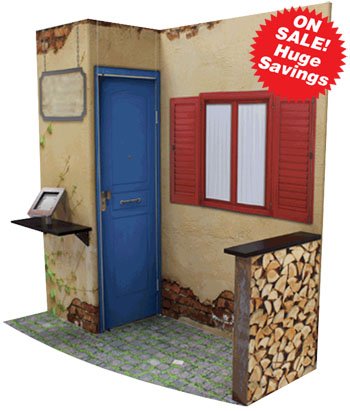Six Tips For Getting The Right People To Staff Your Trade Show Booth
It’s a simple truth: if you want to attract the right people to your trade show booth, you have to have the right people in your exhibit stand. Here are six tips to help make sure you’ve got the best people staffing your booth:
1) Create a list of the right skills and talents you’d like those working your booth to possess.
You probably won’t find enough people who fit your list completely, but with some coaching by you—as well as professional booth staff training—you can gather a group that serves your purposes well. Some of the qualities you’re looking for include:
- enthusiasm
- willingness to learn
- knowledge of your company and its products
- ability to multi-task
- persuasiveness
- capacity to not take rejection personally
- stamina
- team mentality
Grade your potential staffers according to these criteria, and decide who best fits the bill, as well as who might be capable of doing the job with some training. If you need some help with training, we have tips from a professional trade show trainer.
2) Ask potential booth staffers who they’d like to work with.
This isn’t foolproof, because it might create factions within the work force. But it can also eliminate the possibility of putting someone on the team who just doesn’t work well with others. But simply asking people who’ve worked shows before which people they’d like to work with—or who they feel has the right skillset—can be a fairly easy way to fill your schedule. It is also an easy way to find your good trade show staff.
3) Keep the bad apples out.
The last person you want working your exhibit is the person who doesn’twant to be there. The reality of the situation is that working a booth is a golden opportunity for those who know how to use it to their advantage. There’s plenty of low-hanging fruit to be plucked from those prospects visiting your booth who are ready to buy. Outstanding salespeople realize this and eagerly step up for booth duty.
But the ones who don’t want to be there can poison the environment for everyone else. It may gall you to “let someone off the hook” for booth duty. In the end, though, you’ll be doing yourself—and the real salespeople on your staff—a favor by leaving the potentially disgruntled booth worker back at the office.
4) Create the right mix of staffers.
You want people in your booth at all times who can answer every visitor’s questions. That means you need a mix of sales, marketing, technical (or service) people, as well as management representatives. All of them have a role to play in the success of your exhibiting efforts. There will be attendees with general questions that virtually anyone on your staff should be able to answer (especially if you train your booth workers). But others will require specific information that only a technical expert or a member of your service department will be able to supply.
At some shows, upper level executives are among those in attendance, and they’ll want to talk with their peers in your organization. You’ll find it helpful to have someone on your team representing upper management. They’ll come in handy when other executives visit the booth, but they can also help answer questions from media, or navigate a possible networking opportunity with another exhibitor.
5) The best coach has the best plan.
You’re probably the one in charge of your company’s exhibiting efforts, so it’s up to you to have a game plan in place to help things work smoothly on your watch. Just as you prepared a list of qualities you wanted in your staffers, you need to prepare a workable schedule for those staffers—giving them time to attend to matters back in the office, as well as sales in progress while the show is going on.
You also need to build in breaks, so your staffers don’t (at worst) desert you or (almost as bad) spend their time in the booth on their phones with the home office or current prospects. Give them time away from the booth to attend to these matters, so they can focus on booth duty while they’re in your exhibit. And don’t forget to schedule break time for yourself, so you don’t burn out.
6) Clothes make the man (and woman).
Nothing will turn off a potential prospect as quickly as an untidy staffer. You don’t want all your exhibiting efforts undermined by the person with the poorest fashion sense on your team. To avoid this potential debacle,create a dress code.
Some exhibitors choose to outfit their staffers in black or khaki pants and polo shirts with company logos, for example. Others expect their booth workers to wear business suits while they’re on duty. What youdon’t want to do is leave this decision to chance. Well in advance of show time, decide what “look” you want to put forward, then share this information with your team. Order clothing items, if that’s your choice, well in advance of show time.
If you’re working with an inexperienced team, you may also have to set out rules for not just what to wear, but how to wear it: shirts tucked in, pants worn at the waist and hemmed so they don’t drag on the floor, and shoes polished. If there are concerns about women who may wear excessive make-up, or members of both sexes who may display piercings in their ears, nose, lips, eyebrows or elsewhere, set out rules about what’s acceptable and what’s not. Then get management to sign off on it, so they’ll be no argument when putting these rules into practice.
Bonus)
There’s another person who should be on your trade show team: your exhibit company representative. We’d very much like to be that person for your team. We can help you create, renovate or expand your exhibit, provide eye-catching graphics and a variety of accessories to make your exhibit work harder and smarter on the show floor. For information on how the team at American Image Displays can help, call us at (425) 556-9511 or email [email protected].



